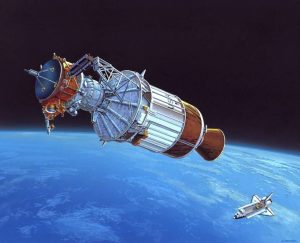- This topic is empty.
-
AuthorPosts
-
24/06/2024 at 14:40 #2950
In today's era of high-speed information transmission, fiber optic communication technology has become the preferred solution for long-distance data transmission due to its ultra-high transmission rate and low signal attenuation. As an important medium for connecting various optical devices in the fiber optic communication system, the precise installation and maintenance of fiber jumpers are crucial to ensure the stability of the system and extend its service life. This article will elaborate on the installation steps, precautions, and maintenance points of fiber jumpers in detail to guide users to correctly handle fiber jumpers and ensure the efficient operation of the communication system.
1. Installation steps of fiber jumpers
The installation of fiber jumpers is a process that requires a delicate operation. The following are detailed steps:
Prepare tools and materials: Make sure all necessary tools such as wire strippers, cutting knives, fusion machines, cleaning tools, etc. are complete, and prepare the required fiber jumpers, connectors, and other materials.
Inspect fiber jumpers: Before installation, check the appearance of the fiber jumpers for damage, and use an optical time domain reflectometer (OTDR) to detect the integrity and loss of the optical fiber.
Strip the outer skin: Use wire strippers to gently strip the outer plastic protective layer of the fiber jumpers, and be careful not to damage the internal glass fiber.
Cleaning the optical fiber: Use special optical fiber cleaning tools and solutions to thoroughly clean the exposed optical fiber to prevent dust and stains from affecting the connection quality.
Cutting the optical fiber: Use a professional cutting knife to vertically cut the end face of the optical fiber to ensure that the cut is flat and smooth.
Installing the connector: According to the required connector type (such as LC, SC, ST, etc.), accurately place the cut optical fiber end face into the connector and fix it.
Fusion or mechanical connection: Select the appropriate fusion method and use a fusion splicer to dock the optical fibers; or use a mechanical connection method to ensure that the connector and the optical fiber are tightly combined.
Test the connection: Use an optical power meter and OTDR to test the connected fiber jumpers to confirm that the connection quality meets the standards.
Arrange and protect: Rationally wire the installed fiber jumpers and use cable ties or pipes to protect them to avoid damage caused by bending and stretching.

2. Precautions during installation
During the installation of fiber jumpers, special attention should be paid to the following points:
Dust prevention requirements: Fiber optic connections are extremely sensitive, and any tiny dust may cause the connection quality to deteriorate, so keep the working environment clean before and after the operation.
Operation specification: Strictly follow the operation procedures to avoid unnecessary pulling, bending, or pressure on the optical fiber.
Angle and force control: Pay attention to the force and angle when cutting and stripping to prevent damage to the optical fiber.
Safety precautions: Be careful when using sharp tools to avoid injury.
Temperature and humidity control: Fiber optic equipment is sensitive to the temperature and humidity of the environment and should be operated at normal temperature and humidity as much as possible.
3. Maintenance points of fiber jumpers
In order to ensure the long-term stability of fiber jumpers, the following maintenance points cannot be ignored:
Regular inspection: Regularly inspect fiber jumpers, including appearance inspection, and use OTDR to detect the transmission performance of optical fiber.
Cleaning and maintenance: Clean fiber jumpers and connectors regularly to maintain the cleanliness of their end faces and avoid additional losses caused by contamination.
Avoid excessive bending: During use, avoid subjecting fiber jumpers to excessive bending radius to avoid damage to the internal structure.
Prevent physical damage: In daily maintenance, pay attention to preventing hard objects from hitting or pressing fiber jumpers, especially the connectors.
Environmental monitoring: Monitor the temperature and humidity of the fiber jumper deployment environment to prevent performance degradation caused by environmental factors.
Timely replacement: Once the fiber jumpers are found to be seriously damaged or the performance is significantly degraded, they should be replaced in time to avoid affecting the performance of the entire communication system.
The correct installation and maintenance of fiber jumpers are key steps to ensure the reliability of the communication system. By following the above installation steps and precautions, as well as regular daily maintenance of fiber jumpers, the stability of the system can be significantly improved and its service life can be extended. In the construction and management of high-speed communication networks, the fine operation and careful maintenance of fiber jumpers are an indispensable link, which is related to the quality and efficiency of communication, and more directly affect the reliability of data services. Therefore, every technician engaged in optical fiber communication should master these basic skills and continuously improve their professional level in practice.
As a fiber jumper manufacturer, we are committed to providing customers with high-quality products and services. At the same time, we also provide a full range of pre-sales consultation and after-sales services to ensure customer satisfaction and trust. By choosing us as your fiber jumper manufacturer, you will get a reliable partner to jointly promote the development of communication technology.
-
AuthorPosts
- You must be logged in to reply to this topic.


